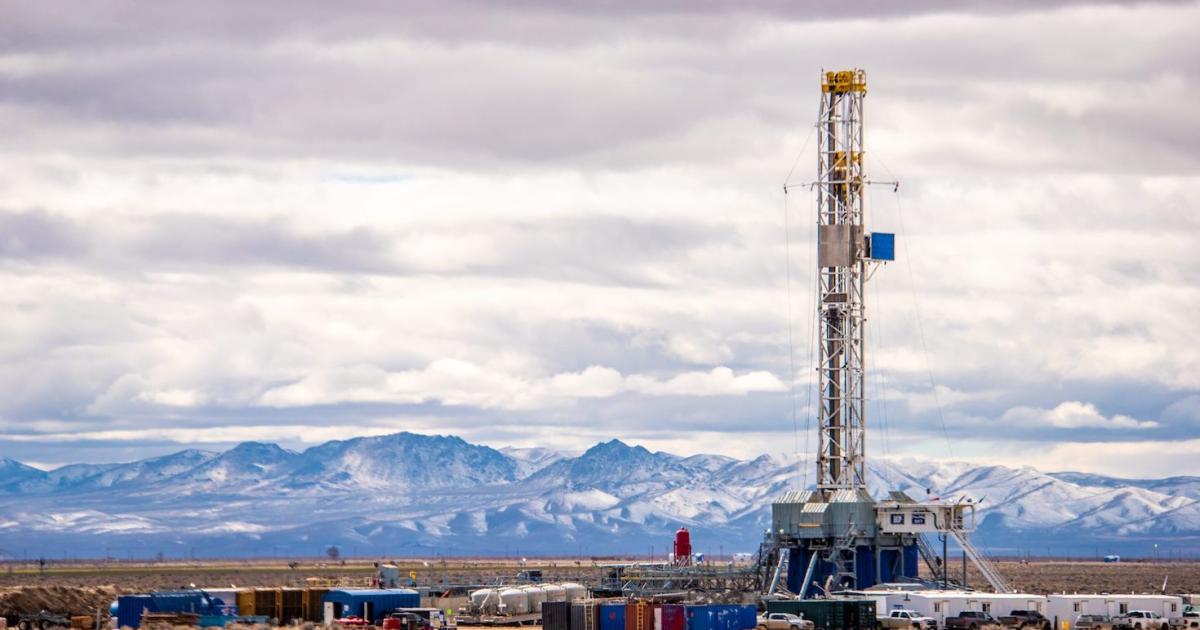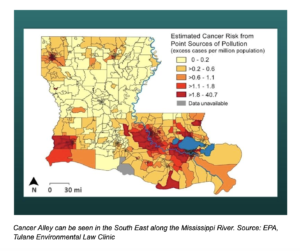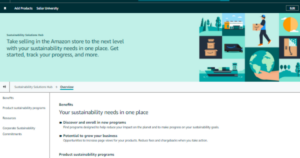
Startup Fervo Energy just made hot-rock history. The company says it is the first to demonstrate that an enhanced geothermal system can reliably produce electricity.
Fervo’s full-scale commercial pilot, Project Red in northern Nevada, passed its production test phase — a 30-day well test standard for geothermal energy resources. The company reported that its system achieved a flow rate of 63 liters per second at high temperatures, conditions that would generate 3.5 megawatts of electricity production — enough energy to power roughly 2,500 homes. According to the company, these results set a record for flow and power output for an enhanced geothermal system. Unlike conventional geothermal resources, enhanced geothermal technologies create new fissures to coax energy out of hot rocks. (More on that in a moment.)
“The takeaway is next-generation geothermal is here today,” Gabe Malek, Fervo’s chief of staff, told me. “It is ready to deploy, it’s ready to scale. It’s now a question of how fast we can do it and at what magnitude.”
The milestone marks an inflection point for geothermal as a clean energy resource. It proves the technical feasibility of an enhanced geothermal system, unlocking the viability of a new clean energy resource.
The next step to unlock enhanced geothermal’s full potential: drive down the cost of the technology through more deployments. One key to that effort will be more offtakers signing power purchase agreements (PPAs) — a model that has been crucial for scaling solar and wind energy.
The promise of enhanced geothermal
Enhanced geothermal systems have long been a clean energy dream. Traditional geothermal taps into naturally occurring fissures underground, heating water that runs a turbine. Enhanced geothermal systems are designed to create fissures in underground rock, allowing geothermal wells in more locations.
Making geothermal well suited for more places means its energy potential is much greater than conventional geothermal. According to the National Renewable Energy Lab, the resource potential of enhanced geothermal is more than 230 gigawatts in the United States when drilling to 4,000 meters or less — the depth oil and gas drills can access with existing equipment.
One thing that’s plagued geothermal traditionally is that each project is bespoke to a certain degree.
What’s more, geothermal is not weather-dependent. That means it has the potential to provide clean, firm energy that can complement wind, solar and batteries to fully decarbonize electricity — a critical part of addressing climate change. The ability to fully operate from clean energy, sometimes known as 24/7 carbon free energy (CFE), is increasingly a goal of the public and private sectors. In fact, Google’s own quest to reach 24/7 CFE inspired the tech giant to partner with Fervo in Project Red.
Recognizing its massive decarbonization and economic promise, the Department of Energy issued an enhanced geothermal earthshot initiative last year — funds dedicated to driving down the cost of enhanced geothermal technologies by 90 percent by 2035.
The geothermal learning curve
Key to unlocking the potential of enhanced geothermal — and crucial for Fervo’s milestone — are hydraulic fracturing (a.k.a. fracking) technologies developed by the oil and gas industry to extract natural gas. Fervo uses the same technology to drill lateral wells and then drill horizontally in geothermal reservoirs to access more heat resources.
Fervo’s breakthrough is a design that drills multiple horizontal wells from a single location. The trick is that every horizontal well is more or less the same — meaning Fervo can take that one technique and copy and paste over and over again, standardizing the process and opening up more hot rock resources for each set of lateral wells. (If you want to geek out on how this works, I recommend listening to the Volts podcast with Fervo CEO Tim Latimer.)
This approach can make geothermal simple and repeatable, according to Fervo. Instead of each new project requiring a unique, individual design, each new deployment can become more efficient. That will help drive down the cost of deployments, the company said.
“One thing that’s plagued geothermal traditionally is that each project is bespoke to a certain degree,” Malek said. “Since we’re able to drill pairs and pairs and pairs of horizontal wells, we no longer have to think about this process as bespoke. It can become repeatable, almost like the manufacturing process for geothermal. And we know that with those economies of scale, costs go down.”
Time to ink your geothermal PPA
I’ve been on a bit of a geothermal spree for about a year. I was bewitched by the magic of geothermal in Iceland, leading me to write about it as a leading clean energy trend in GreenBiz’s State of Green Business report and creating a session about it during VERGE 22.
Core to my ongoing focus is the role corporations must play in scaling the technology. We need more clean, firm energy resources to decarbonize the power grid — including geothermal but not limited to that resource — and market demand is an essential component of driving deployments.
Organizations with 24/7 carbon free energy and decarbonization commitments have an opportunity to be early adopters of these technologies. Some have already taken the plunge with Fervo, including Google and East Bay Community Energy, a community choice aggregator in California.
If your organization has similar goals, acting early would behoove you. According to Fervo, demand for its technology has been high. The company says its PPA dance card is full through 2028, and that was before the successful test phase.
Fervo’s milestone makes its proposition even more rosy. Offtakers interested in geothermal can help scale the resource without the same technological risk that loomed prior to this proofpoint.
“It allows us to reach offtakers that are more risk averse than your Googles, than your community choice aggregators,” Malek said. “Certainly there are improvements that we will continue to make but they are no longer taking a gamble on the core underlying technology that we’re trying to sell here.”
- SEO Powered Content & PR Distribution. Get Amplified Today.
- PlatoData.Network Vertical Generative Ai. Empower Yourself. Access Here.
- PlatoAiStream. Web3 Intelligence. Knowledge Amplified. Access Here.
- PlatoESG. Automotive / EVs, Carbon, CleanTech, Energy, Environment, Solar, Waste Management. Access Here.
- BlockOffsets. Modernizing Environmental Offset Ownership. Access Here.
- Source: https://www.greenbiz.com/article/breakthrough-could-unlock-market-next-generation-geothermal
- :has
- :is
- :not
- $UP
- 000
- 2028
- 22
- 500
- 8
- 90
- a
- ability
- Able
- About
- about IT
- access
- According
- achieved
- acting
- addressing
- adopters
- again
- Aggregator
- Aggregators
- agreements
- Allowing
- allows
- already
- an
- analysis
- and
- approach
- ARE
- article
- AS
- At
- batteries
- Bay
- BE
- become
- been
- before
- bespoke
- Bit
- breakthrough
- business
- but
- by
- california
- CAN
- carbon
- card
- ceo
- certain
- certainly
- change
- chief
- choice
- clean energy
- Climate
- Climate change
- commercial
- commitments
- community
- company
- Complement
- component
- conditions
- continue
- conventional
- Core
- Corporations
- Cost
- Costs
- could
- create
- Creating
- critical
- crucial
- dance
- decarbonization
- dedicated
- Degree
- Demand
- demonstrate
- Department
- Department of Energy
- deploy
- deployment
- deployments
- depth
- Design
- designed
- developed
- do
- down
- dream
- drive
- driving
- during
- each
- Early
- early adopters
- Economic
- economies
- Economies of Scale
- efficient
- effort
- electricity
- energy
- enhanced
- enough
- equipment
- essential
- Ether (ETH)
- Even
- Every
- existing
- extract
- fact
- FAST
- Firm
- flow
- Focus
- For
- Free
- from
- full
- full-scale
- fully
- funds
- Gamble
- GAS
- Geek
- generate
- geothermal energy
- giant
- Go
- goal
- Goals
- greater
- Green
- Grid
- Have
- help
- here
- High
- history
- Horizontal
- HOT
- How
- http
- HTTPS
- i
- if
- improvements
- in
- Including
- increasingly
- individual
- industry
- Inflection Point
- inspired
- instead
- interested
- into
- Issued
- IT
- ITS
- jpg
- just
- Key
- Know
- known
- Last
- Last Year
- leading
- learning
- less
- like
- Limited
- Listening
- location
- locations
- Long
- longer
- made
- magic
- make
- MAKES
- manufacturing
- Market
- marketplace
- massive
- me
- meaning
- means
- milestone
- model
- moment
- more
- more efficient
- much
- multiple
- must
- my
- Natural
- Natural Gas
- Need
- NEVADA
- New
- news
- Newsletter
- next
- next-generation
- no
- node
- now
- occurring
- of
- Oil
- Oil and Gas
- on
- ONE
- ongoing
- opening
- operate
- Opportunity
- or
- organization
- our
- out
- output
- over
- own
- pairs
- part
- passed
- per
- percent
- phase
- pilot
- Places
- plagued
- plato
- Plato Data Intelligence
- PlatoData
- Play
- plunge
- podcast
- Point
- potential
- power
- Power grid
- Prior
- private
- process
- produce
- Production
- project
- promise
- proposition
- proves
- provide
- public
- purchase
- question
- Rate
- RE
- reach
- ready
- recommend
- record
- Red
- Renewable
- renewable energy
- repeatable
- report
- Reported
- resource
- Resources
- Results
- Risk
- Rock
- Role
- Rosy
- roughly
- runs
- s
- Said
- same
- says
- Scale
- scaling
- Second
- sell
- session
- set
- signing
- similar
- Simple
- since
- single
- solar
- some
- Staff
- standard
- standardizing
- State
- States
- Step
- successful
- system
- Systems
- Take
- taken
- taking
- Taps
- tech
- Technical
- technological
- Technologies
- Technology
- test
- than
- that
- The
- then
- There.
- These
- they
- thing
- think
- this
- those
- Through
- Tim
- to
- today
- traditional
- traditionally
- Trend
- Trends
- turbine
- underlying
- unique
- United
- United States
- unlike
- unlock
- unlocking
- us
- uses
- verge
- viability
- want
- was
- Water
- we
- weekly
- WELL
- Wells
- What
- when
- will
- wind
- wind energy
- with
- without
- works
- would
- write
- year
- you
- Your
- zephyrnet









